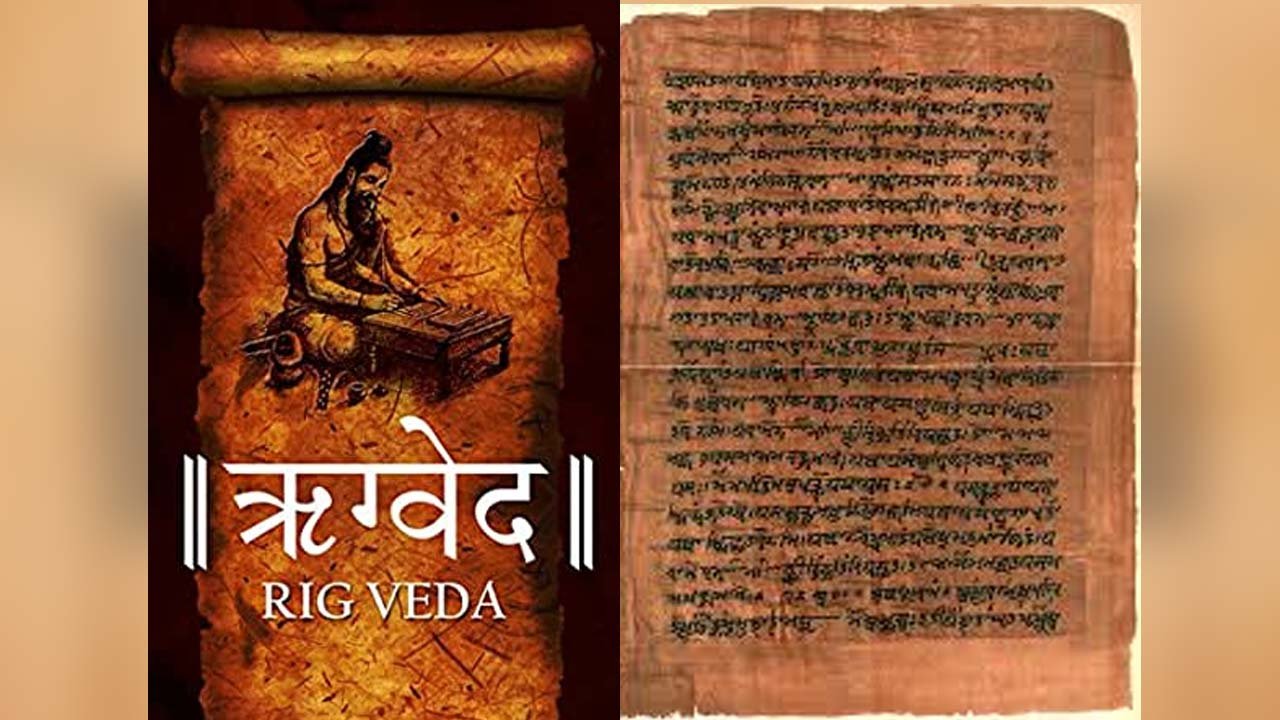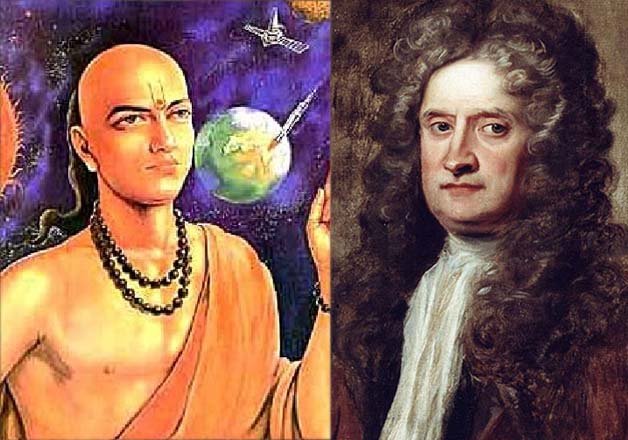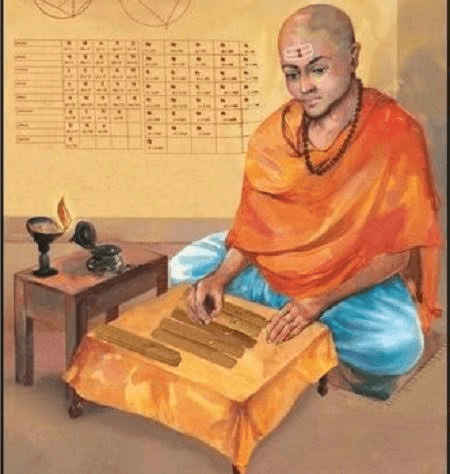S
Shruti Dasgupta
Guest
“Who discovered Gravity?” Any search engine returns the result ‘Isaac Newton’ when asked. However, that is an incomplete if not wrong answer. The concept of gravity and related laws were known to Vedic India much before Isaac Newton and the West became curious about the wonder of nature. The laws governing gravity were unveiled in Bharat over six centuries before Newton’s time by Aryabhatta, a brilliant Indian mathematician and astronomer from 754–775 CE. Gravity as a cosmic concept existed in Rig Veda from 1200 BC. So why does the West get the credit even today for science taught to them by Vedic texts?

PC EBNW Story
Rigveda, a celebrated Vedic text, is acknowledged to be from 1200-1500 BC. The Rigveda consists of a collection of 1,028 hymns in ten books or Mandalas. The hymns preserved in its pages are dedicated to the study of various natural forces. They usually refer to allegorical names of natural forces in the shlokas. Thus, when a shloka refers to the Gods ‘Aditya’ or ‘Chandra’, it usually refers not to the god but to the cosmic forces like the Sun or Moon. These natural forces were worshiped by Vedic Indians not for gains or boons; but as an acknowledgement of their effect on the lives of humans.
The Rigveda is not only a religious text but also contains philosophical and cosmological insights. Its shlokas and hymns also reflect the intellectual pursuits of Vedic Indians. Thus, it is not surprising that they contain the secrets of gravity and its laws in them.
Meaning: O God, You have created the Sun whose rays flow in the stream of light in small packets. This Sun, as created by you, upholds the entire Cosmos steadfastly by the power of attraction granted by you.
Meaning: The sun has bound the Earth and the planets via the attraction granted by the Gods. Just as a horse trainer moves newly trained horses around himself using their reins; the sun moves these planets around itself.
Thus, these ancient shlokas prove that Vedic India knew the existence of the planetary system, the concept of gravity, and the revolution of the planets around the sun. So, why are Western scientists still given credit for it? Most Western scientists of the 1700s-1800s acknowledged that they studied the Vedas. Moreover, they accepted that Rigveda was a gift to humanity by the Gods themselves. However, the discoveries made through their study and understanding of the Vedas were never credited to the so-called ‘land of snake charmers.’ The wisdom that Bharat shared with the world was now taught back to Bharatiyas in a foreign language as Modern Science. Do they truly deserve the credit?

PC India TV News
Aryabhatta, a Vedic genius from the 7th century BC, made profound discoveries and laws that forever changed the way the world looks at the night sky. His deep understanding of the cosmos is reflected in his work “Surya Siddhanta.” This revered book has stood the test of time and has guided countless astronomers and scientists of the West.
The pages of “Surya Siddhanta” aslo include the works of Baskarachrya who unveiled the mysteries of gravity while recording the true wisdom of Vedic India. The ancient text eloquently described how Earth, with its spherical form (भूगोल), remains suspended in the cosmos. The force that holds it steady in its cosmic place was named ‘dharanatmikam sakti’ by this Vedic scientist. He articulates this concept as:
Meaning: The earth is a sphere that stands firmly in the center of the universe due to the ‘dharanatmikam shakti’. This force or shakti prevents the earth from falling away and helps it to stand firm.
Meaning: A force of attraction pulls all objects towards the ground. This force also allows the sun, earth, moon, and constellations to stay firmly in orbit.
Thus, Surya Siddhanta is a study of the concepts of Rig Veda to pen clearer and more relatable scientific concepts. Now these concepts do not vaguely talk of natural forces in allegories related to Vedic Gods. They talk of pure science. But will the so-called heathens of India ever be credited with scientific know-how? Why is Issac Newton still named as the one who discovered Gravity? Why do Indians still teach this proof of Western plagiarism in their schools?

PC Javatpoint
Brahmagupta a mathematician and astronomer was born in Rajasthan, India in 598 AD. His study of the universe led to the discovery of the exact measurement of the Earth’s circumference. He accurately predicted the positions of the planets and came up with the term still used for gravity in India, गुरुत्वाकर्षण or gurutvakarshan. He plotted the solar and lunar eclipses and calculated that the earth took 365 days, six hours, five minutes, and 19 seconds.
Brahmagupta described ‘gurutvakarshan’ as the attractive force that made all bodies fall towards Earth. He believed that the nature of Earth was to attract bodies to itself, similar to how the nature of water is to flow. The works of this Vedic scientist pre-date Newton or any other Astronomer. So why is Isaac Newton the discovery of gravity?
With all the visible information and wisdom stored in the Vedas and Puranas, Vedic Indians can be credited with almost all known discoveries of modern science. Gravity’s enigma was resolved by Vedic India before the West was able to distignuish the Earth as a sphere. Moreover, a conclusion can be made that Western scholars and scientists read the Vedas or their translations and used the knowledge gained to re-coin phrases and concepts for laurels.
To be fair the West can be credited with taking the observations from India and turning them into laws that are taught in the modern world. But the modern Indians must decide for themselves whether the West plagiarizes the works of Vedic Indians. And if yes, why does India still give credit to these Western Scientists in its school books? Finally, Indians must decide if the sands of time and the process of repetition will eliminate the names of prominent Vedic scientists from the minds of the new generation of Bhartiya.
The post Who discovered Gravity? Ancient Vedas VS Western Scholars appeared first on The Jaipur Dialogues.
Continue reading...
Scientific Wisdoms of Rig Veda

PC EBNW Story
Rigveda, a celebrated Vedic text, is acknowledged to be from 1200-1500 BC. The Rigveda consists of a collection of 1,028 hymns in ten books or Mandalas. The hymns preserved in its pages are dedicated to the study of various natural forces. They usually refer to allegorical names of natural forces in the shlokas. Thus, when a shloka refers to the Gods ‘Aditya’ or ‘Chandra’, it usually refers not to the god but to the cosmic forces like the Sun or Moon. These natural forces were worshiped by Vedic Indians not for gains or boons; but as an acknowledgement of their effect on the lives of humans.
The Rigveda is not only a religious text but also contains philosophical and cosmological insights. Its shlokas and hymns also reflect the intellectual pursuits of Vedic Indians. Thus, it is not surprising that they contain the secrets of gravity and its laws in them.
Two Shlokas in Rig Vedas Related to Gravity
यदा सूर्यममुं दिवि शुक्रं ज्योतिरधारयः । आदित्ते विश्वा भुवनानि येमिरे ॥ Rig Veda 8.12.30
Meaning: O God, You have created the Sun whose rays flow in the stream of light in small packets. This Sun, as created by you, upholds the entire Cosmos steadfastly by the power of attraction granted by you.
सविता यन्त्रैः पृथिवीमरम्णादस्कम्भने सविता द्यामदृंहत् । अश्वमिवाधुक्षद्धुनिमन्तरिक्षमतूर्ते बद्धं सविता समुद्रम् ॥ Rig Veda 10.149.1
Meaning: The sun has bound the Earth and the planets via the attraction granted by the Gods. Just as a horse trainer moves newly trained horses around himself using their reins; the sun moves these planets around itself.
Thus, these ancient shlokas prove that Vedic India knew the existence of the planetary system, the concept of gravity, and the revolution of the planets around the sun. So, why are Western scientists still given credit for it? Most Western scientists of the 1700s-1800s acknowledged that they studied the Vedas. Moreover, they accepted that Rigveda was a gift to humanity by the Gods themselves. However, the discoveries made through their study and understanding of the Vedas were never credited to the so-called ‘land of snake charmers.’ The wisdom that Bharat shared with the world was now taught back to Bharatiyas in a foreign language as Modern Science. Do they truly deserve the credit?
Gravity in Surya Siddhant

PC India TV News
Aryabhatta, a Vedic genius from the 7th century BC, made profound discoveries and laws that forever changed the way the world looks at the night sky. His deep understanding of the cosmos is reflected in his work “Surya Siddhanta.” This revered book has stood the test of time and has guided countless astronomers and scientists of the West.
The pages of “Surya Siddhanta” aslo include the works of Baskarachrya who unveiled the mysteries of gravity while recording the true wisdom of Vedic India. The ancient text eloquently described how Earth, with its spherical form (भूगोल), remains suspended in the cosmos. The force that holds it steady in its cosmic place was named ‘dharanatmikam sakti’ by this Vedic scientist. He articulates this concept as:
“मध्ये समन्तंदस्य भुगोलो व्योम्नि तिस्थति बिभ्रनः परमं शक्तिं ब्रह्मणो धरणात्मिकम्।”
Meaning: The earth is a sphere that stands firmly in the center of the universe due to the ‘dharanatmikam shakti’. This force or shakti prevents the earth from falling away and helps it to stand firm.
“अक्रास्ता शक्तिश्च मही तय यत् स्वस्थं गुरु स्वभिमुखं स्वसक्त्य| आकृष्यते तत्पत्तिव भाति समं समंतत् क्व पत्तव्यं खे||”
Meaning: A force of attraction pulls all objects towards the ground. This force also allows the sun, earth, moon, and constellations to stay firmly in orbit.
Thus, Surya Siddhanta is a study of the concepts of Rig Veda to pen clearer and more relatable scientific concepts. Now these concepts do not vaguely talk of natural forces in allegories related to Vedic Gods. They talk of pure science. But will the so-called heathens of India ever be credited with scientific know-how? Why is Issac Newton still named as the one who discovered Gravity? Why do Indians still teach this proof of Western plagiarism in their schools?
Brahmagupta and Laws of Gravity

PC Javatpoint
Brahmagupta a mathematician and astronomer was born in Rajasthan, India in 598 AD. His study of the universe led to the discovery of the exact measurement of the Earth’s circumference. He accurately predicted the positions of the planets and came up with the term still used for gravity in India, गुरुत्वाकर्षण or gurutvakarshan. He plotted the solar and lunar eclipses and calculated that the earth took 365 days, six hours, five minutes, and 19 seconds.
Brahmagupta described ‘gurutvakarshan’ as the attractive force that made all bodies fall towards Earth. He believed that the nature of Earth was to attract bodies to itself, similar to how the nature of water is to flow. The works of this Vedic scientist pre-date Newton or any other Astronomer. So why is Isaac Newton the discovery of gravity?
Did the West Plagiarize Vedic Indians?
With all the visible information and wisdom stored in the Vedas and Puranas, Vedic Indians can be credited with almost all known discoveries of modern science. Gravity’s enigma was resolved by Vedic India before the West was able to distignuish the Earth as a sphere. Moreover, a conclusion can be made that Western scholars and scientists read the Vedas or their translations and used the knowledge gained to re-coin phrases and concepts for laurels.
To be fair the West can be credited with taking the observations from India and turning them into laws that are taught in the modern world. But the modern Indians must decide for themselves whether the West plagiarizes the works of Vedic Indians. And if yes, why does India still give credit to these Western Scientists in its school books? Finally, Indians must decide if the sands of time and the process of repetition will eliminate the names of prominent Vedic scientists from the minds of the new generation of Bhartiya.
The post Who discovered Gravity? Ancient Vedas VS Western Scholars appeared first on The Jaipur Dialogues.
Continue reading...
